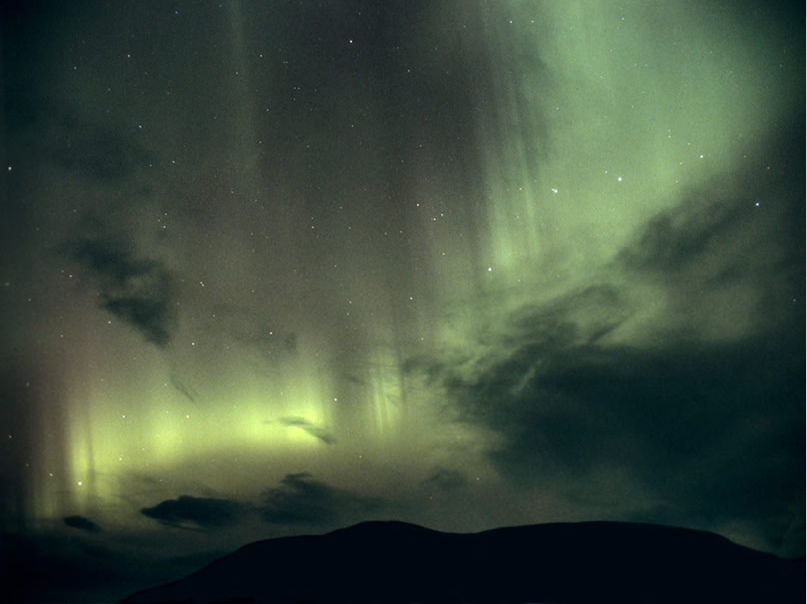Aurora
The Enigmatic Beauty of the Aurora
The Aurora Borealis, also known as the Northern Lights, is a mesmerizing natural phenomenon that has captivated humans for centuries. This celestial light display occurs in the polar regions of the Earth and is caused by interactions between the solar wind and the Earth's magnetic field. While the existing content provides a glimpse into the ethereal beauty of the Aurora, let's delve deeper into this awe-inspiring spectacle and explore some lesser-known aspects.
Origins and Variations
The Aurora occurs when charged particles from the Sun, carried by the solar wind, interact with the Earth's magnetic field. As these particles approach the Earth, they collide with atoms and molecules in the upper atmosphere, releasing energy in the form of light. The colors of the Aurora are determined by the type of gas particles involved in these collisions. Oxygen produces green and red hues, while nitrogen emits blue and purple colors. The variations in color intensity and shape create a kaleidoscope of ever-changing patterns in the night sky.
Geographic Distribution
Although commonly associated with polar regions, the Aurora can occasionally be seen at lower latitudes during periods of heightened solar activity. The Northern Lights are typically visible in a ring-shaped region around the magnetic poles, known as the auroral oval. This oval expands and contracts depending on solar activity, with its center shifting in response to changes in the Earth's magnetic field. While Alaska, Canada, Scandinavia, and Russia are well-known for their prime Aurora viewing locations, lucky observers have been treated to this celestial spectacle as far south as Texas and even Mexico.
Auroral Sounds
While most people associate the Aurora with visual displays, some individuals claim to have heard accompanying sounds during particularly intense displays. Known as "auroral sounds" or "electrophonic sounds," these auditory phenomena remain enigmatic and are not yet fully understood. Descriptions of these sounds vary widely, with some likening them to crackling or hissing noises, while others describe them as eerie whistling or swishing sounds. Scientists speculate that these sounds may be caused by the electromagnetic waves generated by the Aurora interacting with the human auditory system.
The Role of Solar Activity
Solar activity plays a crucial role in the occurrence and intensity of the Aurora. The Sun follows an 11-year solar cycle, during which its activity waxes and wanes. During periods of high solar activity, known as solar maximum, the frequency and intensity of the Aurora increase. Conversely, during solar minimum, when the Sun is less active, the occurrence of the Aurora becomes less frequent. Monitoring solar activity through sunspot observations and solar wind measurements can help predict when and where the Aurora will be visible.
Capturing the Aurora
Photographing the Aurora can be a rewarding yet challenging endeavor. Long exposure times are typically required to capture the faint light of the Aurora, necessitating a sturdy tripod and a remote shutter release. A wide-angle lens is ideal for capturing the expansive sky, while setting the camera to a high ISO sensitivity can help gather more light. Patience is key, as the Aurora can be elusive and unpredictable. Planning your shoot during a new moon phase and away from light pollution will enhance your chances of witnessing and photographing this natural wonder.
Cultural Significance
Throughout history, various cultures have attributed mystical and spiritual significance to the Aurora. In Norse mythology, the Aurora was believed to be a celestial bridge between the gods and humans. Indigenous peoples in northern regions often have their own folklore and interpretations of the Northern Lights, associating them with spirits, ancestors, or messages from the divine. Today, the Aurora continues to inspire artists, writers, and dreamers worldwide, evoking a sense of wonder and reminding us of the vastness and beauty of our natural world.
Conclusion
The Aurora Borealis remains one of nature's most captivating displays, enchanting observers with its ethereal beauty and otherworldly charm. From its origins in the interaction between the solar wind and Earth's magnetic field to its mesmerizing colors and elusive sounds, the Aurora continues to fascinate scientists and enthusiasts alike. Whether you are lucky enough to witness this celestial spectacle firsthand or simply marvel at its photographs, the Aurora serves as a reminder of the intricate and interconnected wonders of our universe. So, keep your eyes on the night sky and be ready to be spellbound by the enigmatic beauty of the Aurora.

Aurora Borealis at
Tänndalen, Sweden. captured in October 2005 by P-M Hedén (Astro and atmospheric images).
Image ©P-M Hedén, shown with permission.
Note: this article has been automatically converted from the old site and may not appear as intended. You can find the original article here.
Reference Atmospheric Optics
If you use any of the definitions, information, or data presented on Atmospheric Optics, please copy the link or reference below to properly credit us as the reference source. Thank you!
-
<a href="https://atoptics.co.uk/blog/aurora/">Aurora</a>
-
"Aurora". Atmospheric Optics. Accessed on November 26, 2024. https://atoptics.co.uk/blog/aurora/.
-
"Aurora". Atmospheric Optics, https://atoptics.co.uk/blog/aurora/. Accessed 26 November, 2024
-
Aurora. Atmospheric Optics. Retrieved from https://atoptics.co.uk/blog/aurora/.